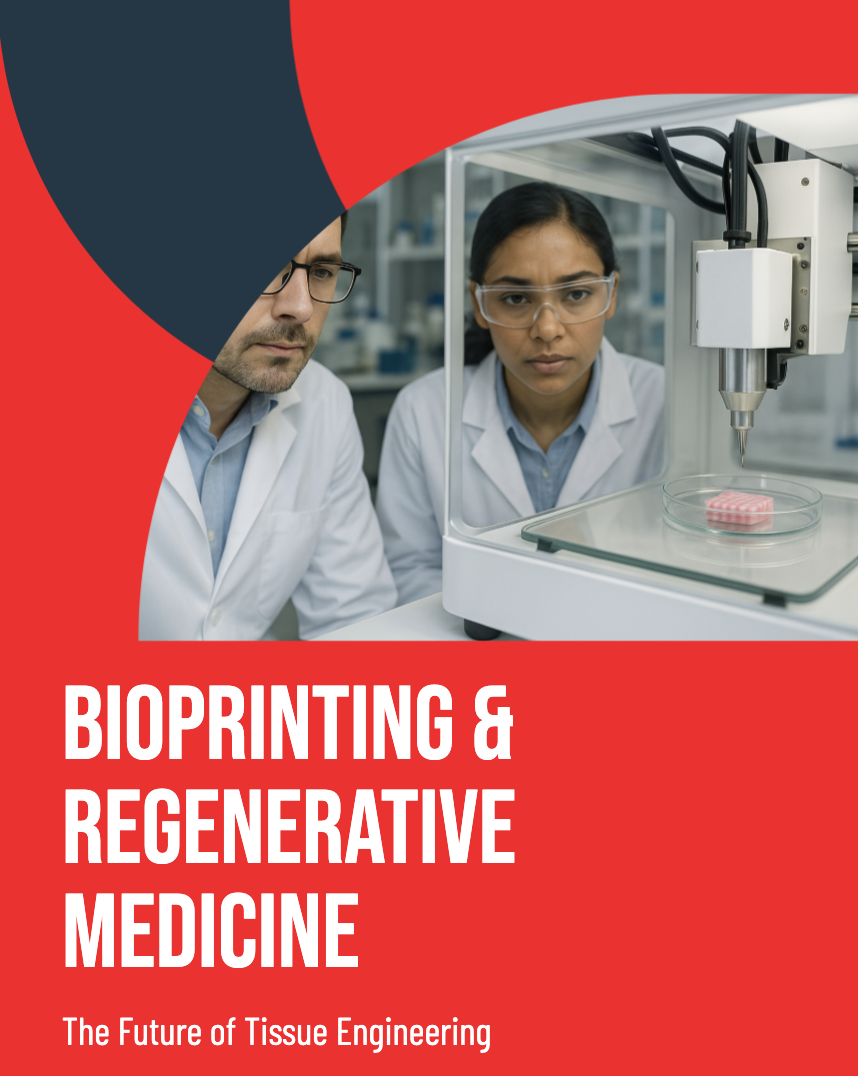
Bioprinting and regenerative medicine are revolutionizing the field of healthcare and biotechnology. With advancements in 3D printing and stem cell research, scientists are working towards developing functional tissues and even entire organs. This emerging technology has the potential to address organ shortages, create personalized medicine, and significantly enhance the treatment of injuries and diseases. In this article, we will explore the future of bioprinting and regenerative medicine, its applications, challenges, and ethical considerations.
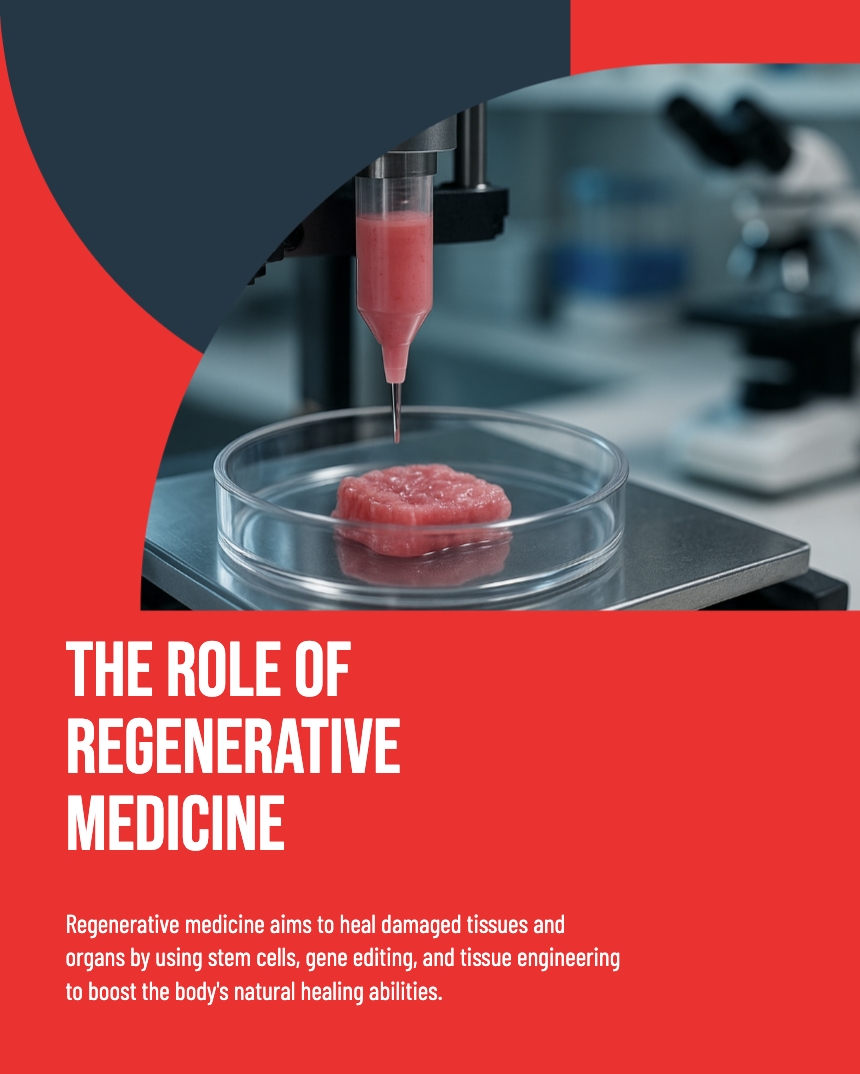
Bioprinting is an advanced form of 3D printing that involves the layer-by-layer deposition of bio-inks composed of living cells, biomaterials, and growth factors to create complex tissue structures. Unlike traditional 3D printing, which uses plastic or metal, bioprinting fabricates biological structures that mimic human tissues and organs.
Key Components of Bioprinting
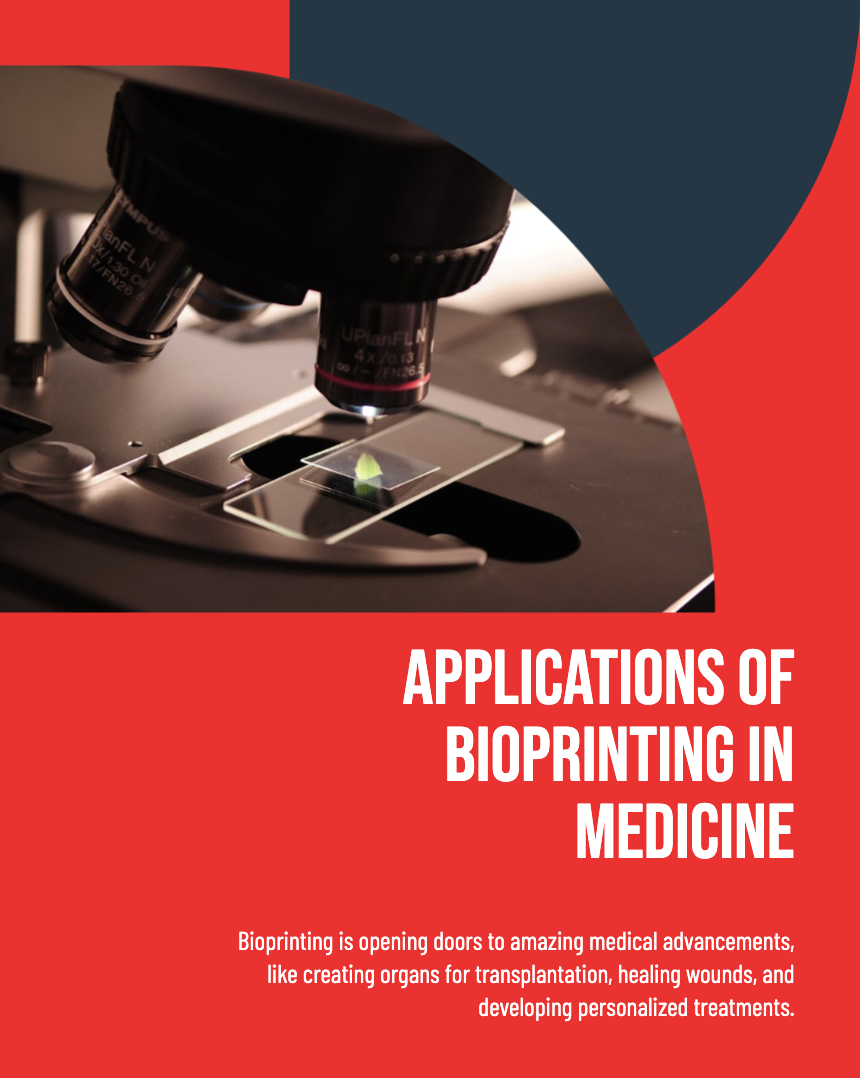
The Role of Regenerative Medicine
Regenerative medicine focuses on repairing, replacing, or regenerating damaged tissues and organs. It integrates stem cell therapy, gene editing, and tissue engineering to enhance the body’s natural healing processes.
Types of Regenerative Medicine Approaches
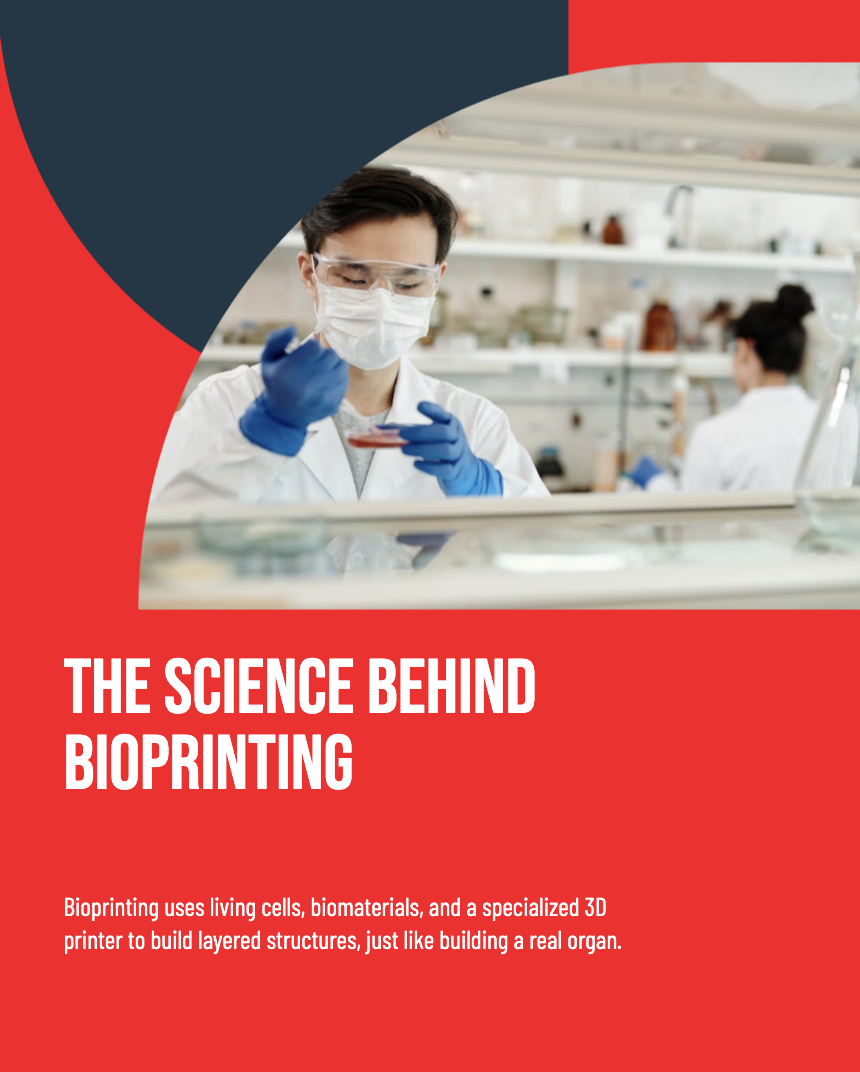
Bioprinting is opening new possibilities in healthcare, from drug testing to creating artificial organs. Here are some of the most promising applications:
1. Organ Transplantation
One of the most significant applications of bioprinting is the potential to create transplantable organs. Patients suffering from kidney, liver, or heart failure may benefit from bioprinted organs, reducing the dependency on organ donors.
2. Wound Healing and Skin Regeneration
Burn victims and patients with chronic wounds could receive bioprinted skin grafts tailored to their needs. Bioprinted skin can integrate seamlessly with the patient's body, reducing the risk of rejection.
3. Drug Testing and Disease Modeling
Pharmaceutical companies can use bioprinted tissues to test new drugs, reducing reliance on animal testing and improving accuracy in predicting human responses.
4. Bone and Cartilage Regeneration
Bioprinting has been successfully used to create customized bone and cartilage implants for patients with orthopedic injuries.
5. Neural Tissue Engineering
Research is underway to develop bioprinted neural tissues that could help repair spinal cord injuries and neurodegenerative diseases like Parkinson’s and Alzheimer’s.
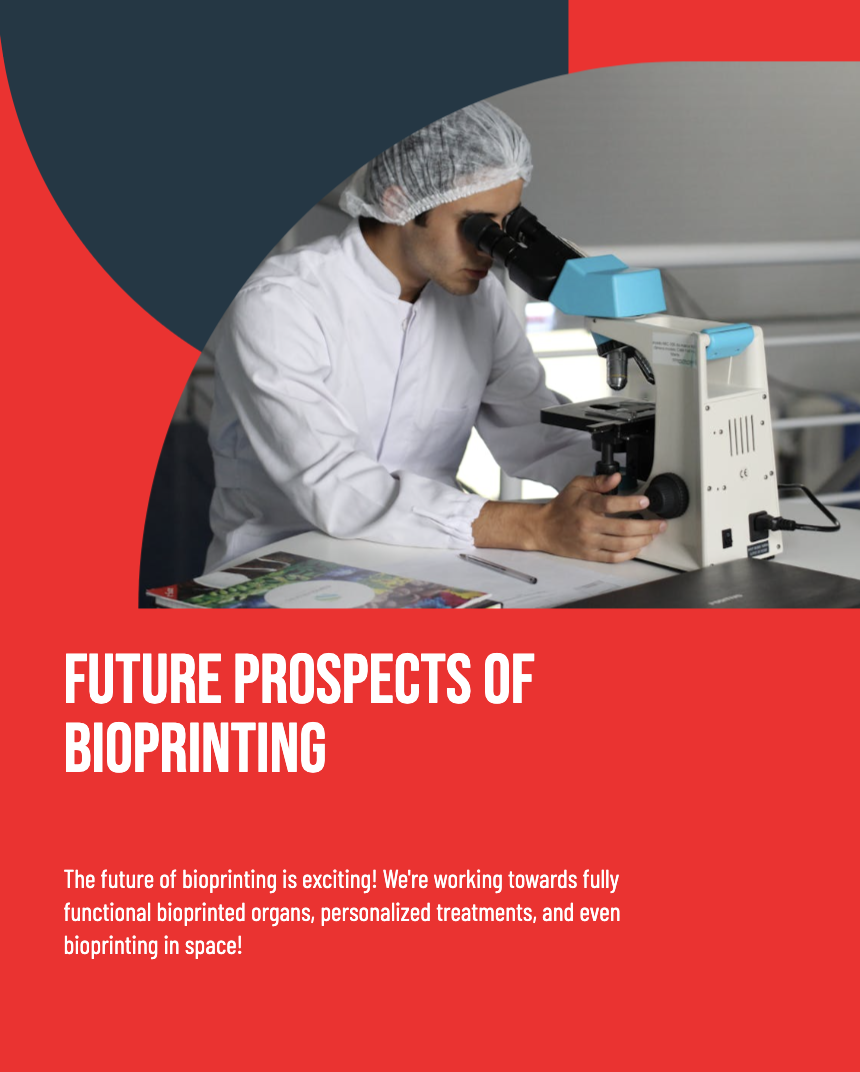
Bioprinting is a multi-step process that involves various disciplines, including bioengineering, material science, and molecular biology.
Steps in the Bioprinting Process
1. Pre-processing
Imaging techniques like CT scans and MRI are used to create a digital model of the tissue or organ.
Bio-inks are prepared using a combination of cells and biomaterials.
2. Printing
The bioprinter deposits layers of bio-ink following a digital blueprint.
Scaffolding supports cell structures and guides tissue growth.
3. Post-processing
The printed tissue undergoes incubation in a bioreactor to allow cell maturation.
Growth factors stimulate tissue integration and functionality.
Despite its potential, bioprinting faces several technical and ethical challenges:
1. Complexity of Human Organs
Organs like the heart and liver have intricate structures and require precise vascularization to function properly.
2. Vascularization Issues
Bioprinted tissues need a network of blood vessels to supply oxygen and nutrients. Researchers are still developing ways to integrate functional vascular systems.
3. Ethical Concerns
The use of embryonic stem cells raises moral and ethical debates.
Bioprinting of human tissues may lead to concerns about organ commercialization.
4. Cost and Accessibility
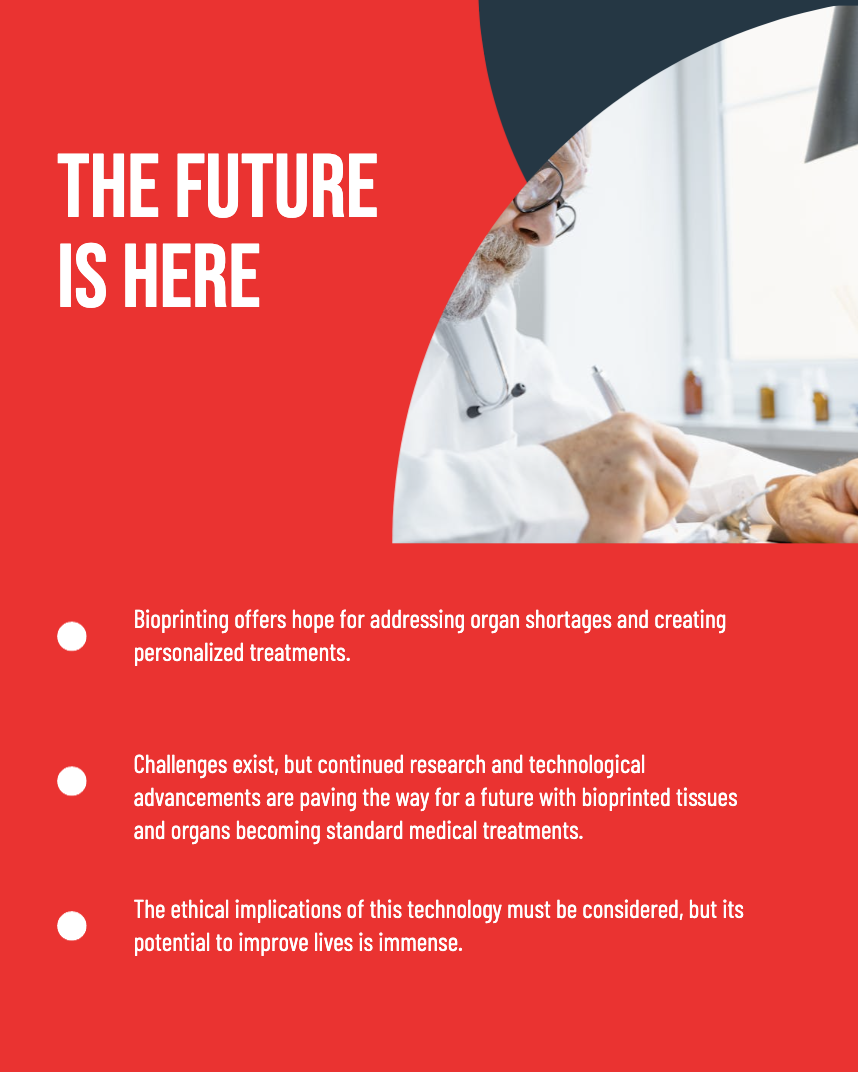
Bioprinting technology is expensive, making it inaccessible for widespread clinical use. Further advancements are needed to reduce costs and improve scalability.
The future of bioprinting looks promising, with researchers working on several breakthroughs that could redefine healthcare.
1. Fully Functional Bioprinted Organs
Scientists aim to create fully functional human organs that could replace traditional organ transplants.
2. Personalized Medicine
Bioprinting enables the creation of customized tissues and organs tailored to individual patients, reducing the risk of rejection.
3. Integration with Artificial Intelligence (AI)
AI-powered bioprinting could optimize tissue fabrication, improve precision, and accelerate the development of complex structures.
4. Space Bioprinting
NASA and other space agencies are exploring bioprinting technology for use in space missions to heal injuries and create human tissues in microgravity.
The rapid advancement of bioprinting necessitates ethical guidelines and regulatory frameworks.
Key Ethical Questions
Regulatory Landscape
Governments and medical organizations are working to establish clear guidelines for the clinical application of bioprinting and regenerative medicine.
Bioprinting and regenerative medicine hold immense promise in transforming healthcare. From organ transplantation to tissue engineering, these innovations could revolutionize the treatment of diseases and injuries. While there are still challenges to overcome, continued research and technological advancements will pave the way for a future where bioprinted tissues and organs become a standard in medical treatment.
1. Can bioprinting completely replace organ transplants?
Not yet, but researchers are making significant progress. Bioprinting aims to provide an alternative to organ donors and reduce transplant waiting lists.
2. Is bioprinting safe for humans?
Current bioprinted tissues are still in the experimental stage, but safety trials are ongoing to ensure compatibility with human physiology.
3. What materials are used in bioprinting?
Bioprinting uses bio-inks made from living cells, hydrogels, and biomaterials that support tissue growth.
4. How long does it take to bioprint an organ?
The printing process can take several hours to days, but the maturation phase in a bioreactor may take weeks to months before the tissue becomes functional.
5. When will bioprinting be widely available?
While some applications, like skin grafts and cartilage implants, are already being tested, widespread clinical use of bioprinted organs may take another decade or more.
 01.04.2025
01.04.2025